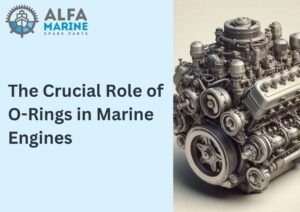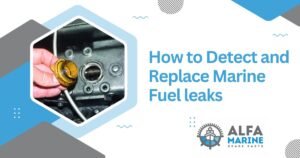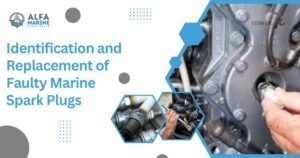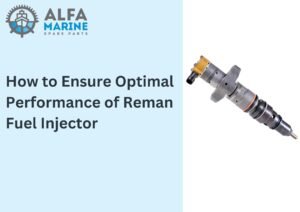The operations in a marine vessel rely on a set of complex equipment in the engine room. Below the deck lies the backbone of all operating machines – the powerful engines. Marine engines can be classified into two categories – main engine and auxiliary engine. Shipowners often prioritize the main engine while overlooking the purpose of the marine auxiliary engine as a vital source of power on board.
Here is the definitive guide to auxiliary marine powering systems in watercraft to help vessel operators with an informed purchase decision.
What is an Auxiliary Engine on a Marine Vessel?
An auxiliary engine (a.k.a. auxiliary power unit) serves as a secondary engine to cater electrical and hydraulic power supply to the various machinery and equipment in a watercraft. These engines feature a compact design, offering continuous power supply across the vessel from the bow to the aft end.
It plays a crucial role in producing mechanical energy (later converted to electrical energy by a generator system) to supply electricity to various electronic systems and machines in the vessel. These include pumps, communication equipment, cooling systems, onboard A/Cs, computers, monitoring units, etc.
Types of Marine Auxiliary Engines
Auxiliary engines for watercraft vary in dimensions, designs, and other attributes. These power units can be classified into the following categories, depending on specific functions, type of fuel used, etc.
Diesel Engines
Auxiliary diesel engines top the list for several reasons. Besides being an affordable fuel option, diesel is less explosive compared to other alternatives. Diesel engines can produce more energy per combustion cycle and offer enhanced energy extraction than anything else.
Diesel-Electric Hybrid Engines
These engines are valued for efficiency, versatility, and adaptability. It effortlessly produces electrical energy from diesel combustion to generate flexible power for changing energy requirements.
Gas Turbines
Gas turbine engines are powerful auxiliary powering solutions for heavy-duty ships. These engines boast superb power output and fast response timing to support high-speed propulsion. Additionally, it is a reliable backup power solution to keep the vessel sailing if the main engine stops working or encounters glitches.
Battery Power Storage Systems
This is an additional installation in the engine room to receive energy from various sources for emergency storage. Investing in a battery energy storage system ensures peace of mind to meet bulk power supply on board. As a source of clean energy, it is beneficial for emission control and improving fuel economy.
Steam Turbines
This conventional technology is no longer incorporated in ships due to lacking efficiency and complex mechanisms. The equipment generates electricity from steam produced in a boiler to run various machinery.
Applications Supported by a Marine Auxiliary Engine
The hydraulic and electrical power generated by auxiliary engines serves multiple operations in a watercraft. Here is an overview of the purpose of installing a robust auxiliary powering system in the engine room.
Onboard Electronic Systems and Machineries
The marine auxiliary engine supplies mechanical energy to the generator to produce electrical energy. This electricity powers lighting, cooling units, and other electrical devices (electronic control panels, computers, phones, etc.) in various parts of the ship.
Furthermore, these engines supply power to navigation applications (echo sounders, GPS, radar, etc.) and communication equipment (emergency radio transmitters, distress beacons, satphone, etc.).
Pumps
The power generated from auxiliary units supports diverse pumping systems, including ballast pumps, bilge pumps, emergency fire extinguisher pumps, etc.
Steering System
While the propulsion system derives power from the main engine, the energy from the auxiliary unit boosts the manoeuvring capacity of the ship by powering the bow thrusters.
Heavy Hauling Equipment
Depending on the type of vessel and its dimensions, the auxiliary engines support the haulage operations. From driving fishing nets to moving colossal cranes, the energy meets diverse functions.
Backup Power Substitute for the Main Engine
The auxiliary engines support the configuration for emergency power supply for marine propulsion systems. It offers backup power during main engine failure for an uninterrupted voyage.
Are you looking to upgrade to a powerful marine auxiliary engine?
Alfa Marine Spare Parts offers auxiliary machinery in various power ranges and ratings for vessels of all sizes and purposes. Visit our store to explore an expansive collection of new and reman engines from top brands – Cat, Cummins, MAN, MTU, Wartsila, Doosan, Scania, Yanmar, and more.







